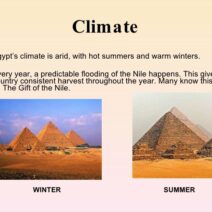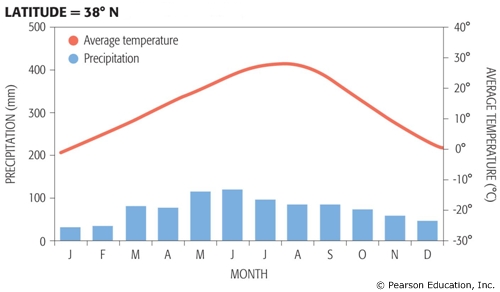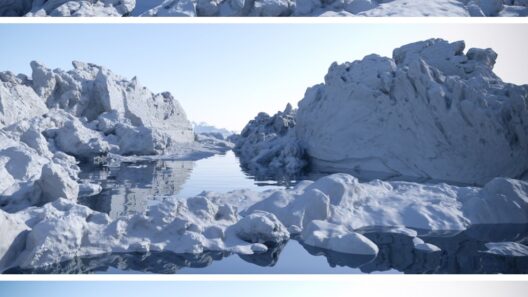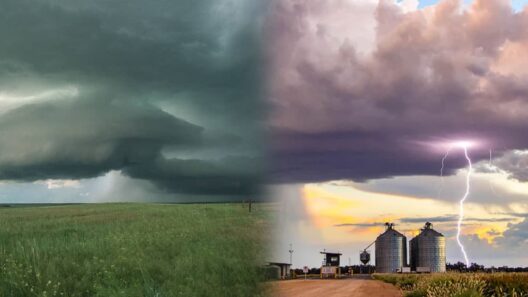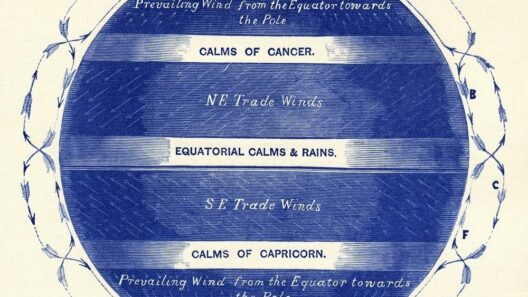The Sahara Desert, often perceived as an arid expanse of unyielding sand, is a captivating tapestry of climate extremes. Situated across North Africa, it envelops an area greater than the United States, showcasing a bewildering array of climatic conditions that are anything but monotonous. The landscape transforms from undulating dunes to breathtaking oases, providing a vivid backdrop for the climate’s theatrical extremes: scorching days and freezing nights.
During the day, the Sahara becomes a relentless furnace. Temperatures soar, often exceeding 50 degrees Celsius (122 degrees Fahrenheit) in the summer months. The sun casts an unforgiving glare on the golden sands, as if igniting the very earth with its radiant fury. This searing heat creates a mirage, distorting the horizon and warping reality, similar to how sound reverberates in the vast emptiness. Such extremes provide insight into the nature of the desert; it is a battleground where survival is a constant struggle.
Yet, to call the Sahara simply “hot” would be a grievous oversimplification. The low humidity levels exacerbate the sensation of heat, making it feel as though one is engulfed in a parching embrace. Days drag on as the sun relentlessly punishes the landscape, causing the ground to shimmer in hues of gold and orange, akin to molten metal. This diurnal oppression is dissipated, however, when the sun bids adieu to the horizon, giving way to an entirely different climate tapestry.
As twilight descends, the metamorphosis of the Sahara unfolds dramatically. The temperature plummets like a stone thrown into an abyss. After sunset, it is not uncommon for the mercury to dip to near freezing, resulting in a stark contrast that is emblematic of the desert’s dual nature. The chilling winds arrive with a swiftness that belies the day’s oppressiveness, making nightfall in the Sahara a chilling affair that can induce shivers even in the sturdiest of travelers. This fluctuation between the searing heat of day and the biting cold of night renders the Sahara not just a place of extremes, but a locale of hypnotic parallels.
The unique climate of the Sahara is defined by its aridness and its low precipitation levels. Annual rainfall is mercilessly scarce, averaging around 25 mm (1 inch) in some regions, with certain areas receiving virtually no rainfall at all. This deficiency creates an environment where only the most tenacious forms of life can thrive. Drought-resistant flora, such as acacia trees and various succulents, have evolved ingenious adaptations, thriving in the inhospitable topology. The flora illustrates the resilience of life, emerging from the barren surface to defy the odds of their unforgiving environment.
The uniqueness of the Sahara’s climate is not solely the domain of the scorched earth and frost-laden nights; it is also characterized by an intricate interplay of factors. Mineral particles from the vast expanses are airborne, carried by the wind from the Sahara to other parts of the globe. During certain seasons, these particles snowball into sandstorms, sculpting the landscape while simultaneously displacing them across continents. This phenomenon connects disparate ecosystems, suggesting an almost poetic unity within the global climate system.
Wind patterns also contribute to the phenomenon known as the Saharan Air Layer (SAL), a mass of dry, dust-laden air that can travel across oceans. The SAL acts as a barrier, influencing weather systems far beyond the borders of the desert itself, often impacting hurricanes in the Atlantic by suppressing their intensification. This illustrates that the Sahara possesses a global significance that transcends its vast stretches of sand.
The thermal contrast in such a setting is also magnified by the geological diversity within the Sahara. The presence of mountains, plateaus, and valleys contributes to local climatic variations. In mountainous terrains, the temperatures can be significantly lower, and the snow-capped peaks stand in stark juxtaposition to the surrounding arid expanses. These microclimates provide a habitat for a myriad of wildlife, further enriching the diverse ecological tapestry of the Sahara.
Despite its harshness, the Sahara is not devoid of life; rather, it embodies a communion of creatures, flora, and human resilience. Nomadic tribes have adapted to this grueling environment, crafting ways to secure water and shelter in one of Earth’s most unforgiving biomes. Their cultural practices and survival strategies illuminate the inherent connection humans have forged with the land—a relationship as complex as the climate itself.
In exploring the climatic dichotomy of the Sahara Desert—where days are marked by sweltering temperatures that can ignite the sands with blistering heat, and nights offer a stark and chilling contrast—we are drawn into the depths of an ecosystem that defies simplicity. The Sahara is not merely a canvas of desolation but a vibrant testament to nature’s artistry. Its dramatic climate serves as both a crucible for life and a stark reminder of the precarious balance within our planet’s environmental narrative.
Thus, the Sahara narrates an epic tale, one of survival, adaptation, and awe-inspiring contrasts. Scorching days juxtaposed with freezing nights highlight a unique appeal that compels humanity to marvel at the beauty and resilience found within the harshest of climates, forcing a reckoning with our understanding of life, adaptation, and ultimately, the intricate web of interdependence that binds us all under the vast sky.
